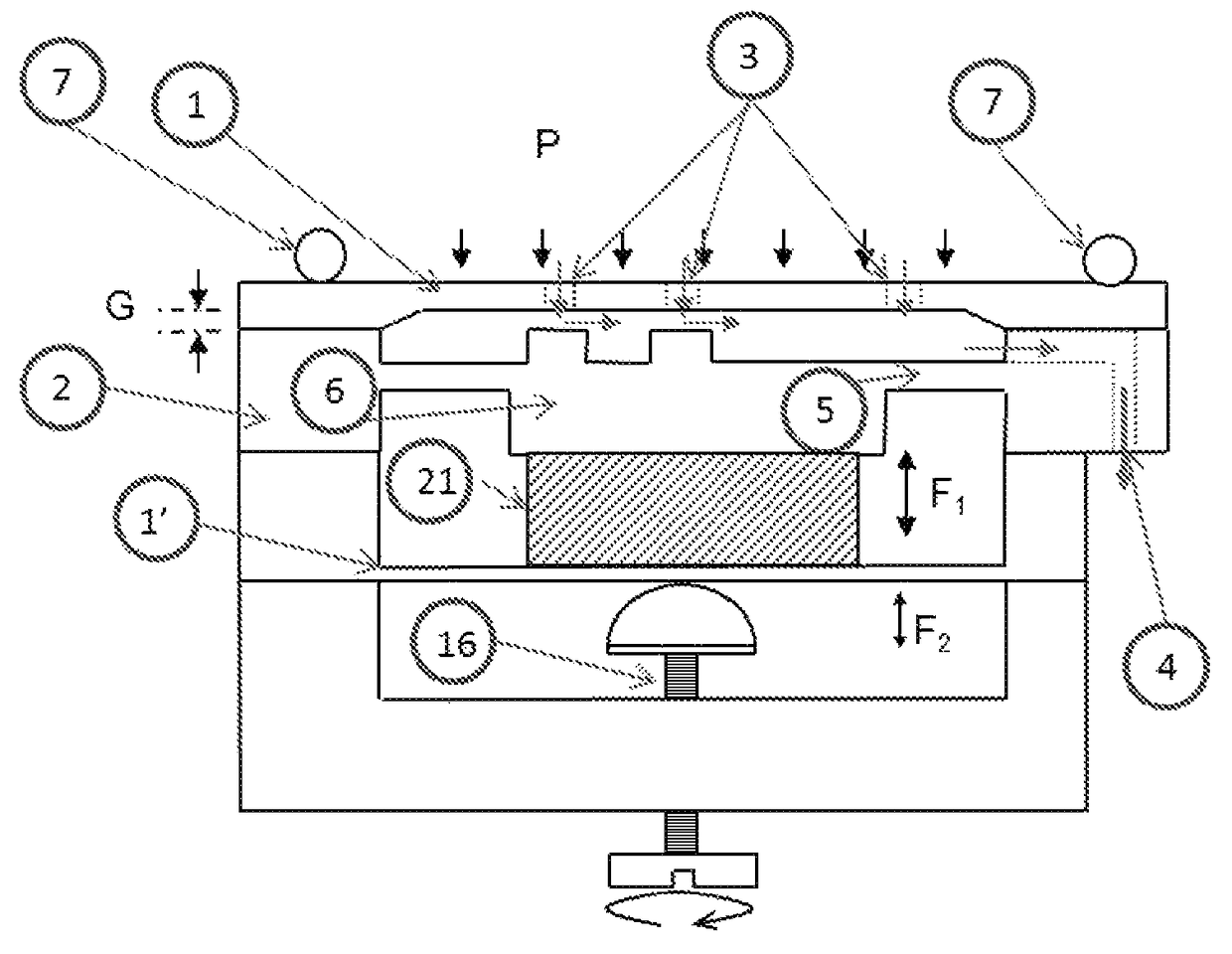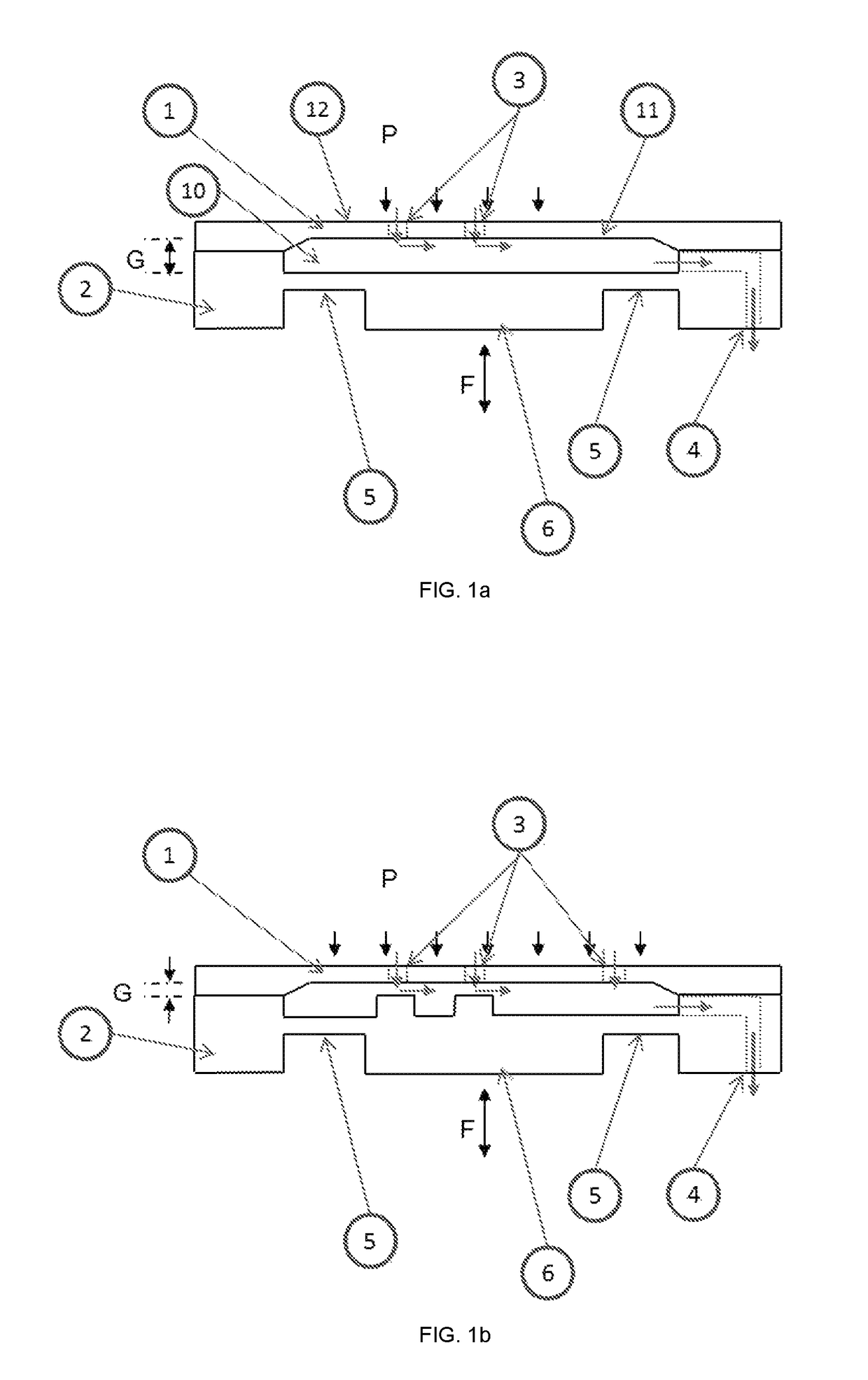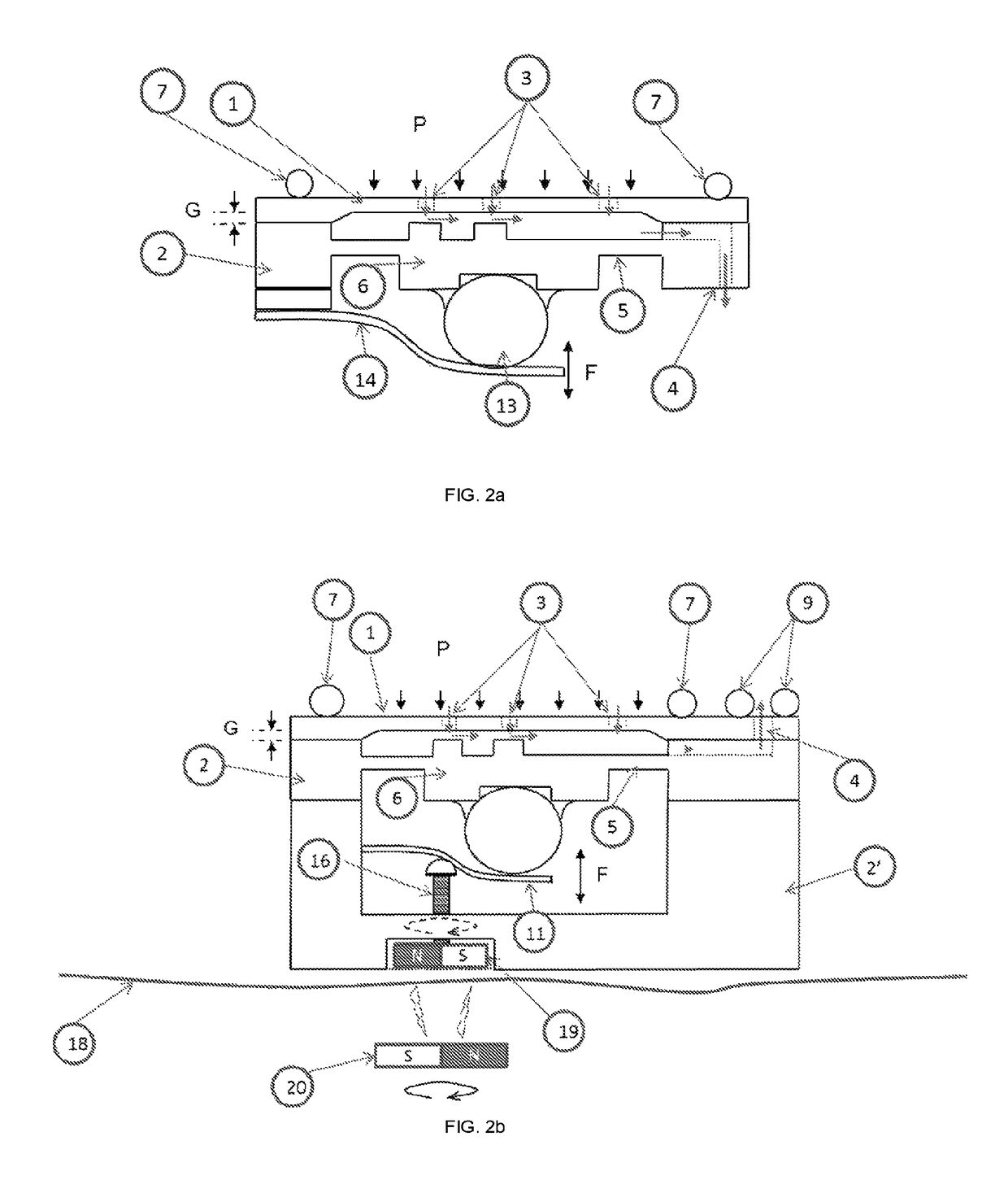Adjustable passive flow regulator
a flow regulator and adjustable technology, applied in the direction of flow monitors, flow control, wound drains, etc., can solve the problems of complicated and expensive fabrication of such devices, affecting the accuracy level, and affecting the flow of fluid through, so as to achieve the effect of increasing the fluidic resistan
- Summary
- Abstract
- Description
- Claims
- Application Information
AI Technical Summary
Benefits of technology
Problems solved by technology
Method used
Image
Examples
Embodiment Construction
[0083]As used in this specification and the appended claims, any direction referred to herein, such as “top”, “bottom”, “left”, “right”, “upper”, “lower”, and other directions or orientations are described herein for clarity in reference to the figures and are not intended to be limiting of an actual device or system. Devices and systems described herein may be used in a number of directions and / orientations.
[0084]As used in this specification and the appended claims, the term “or” is generally employed in its sense including “and / or” unless the content clearly dictates otherwise.
[0085]As used herein, “have”, “having”, “include”, “including”, “comprise”, “comprising” or the like are used in their open ended sense, and generally mean “including, but not limited to”.
[0086]The invention is set forth and characterized in the independent claims, while the dependent claims describe other characteristics of the invention.
[0087]According to an embodiment but not limited to, the FIG. 1 show ...
PUM
 Login to View More
Login to View More Abstract
Description
Claims
Application Information
 Login to View More
Login to View More - R&D
- Intellectual Property
- Life Sciences
- Materials
- Tech Scout
- Unparalleled Data Quality
- Higher Quality Content
- 60% Fewer Hallucinations
Browse by: Latest US Patents, China's latest patents, Technical Efficacy Thesaurus, Application Domain, Technology Topic, Popular Technical Reports.
© 2025 PatSnap. All rights reserved.Legal|Privacy policy|Modern Slavery Act Transparency Statement|Sitemap|About US| Contact US: help@patsnap.com



